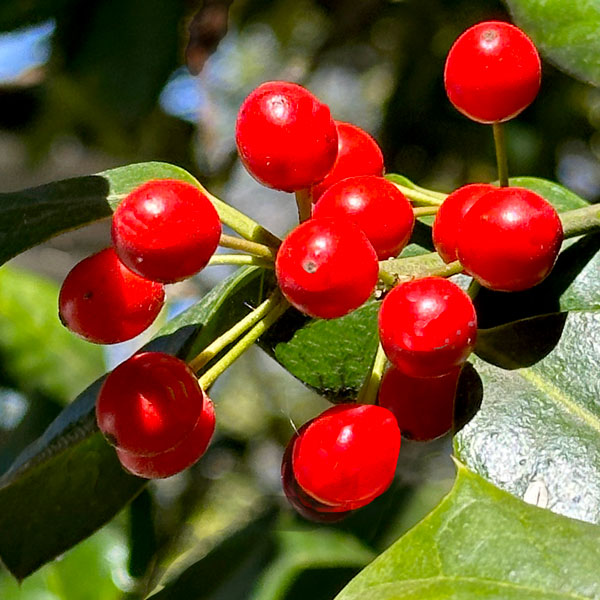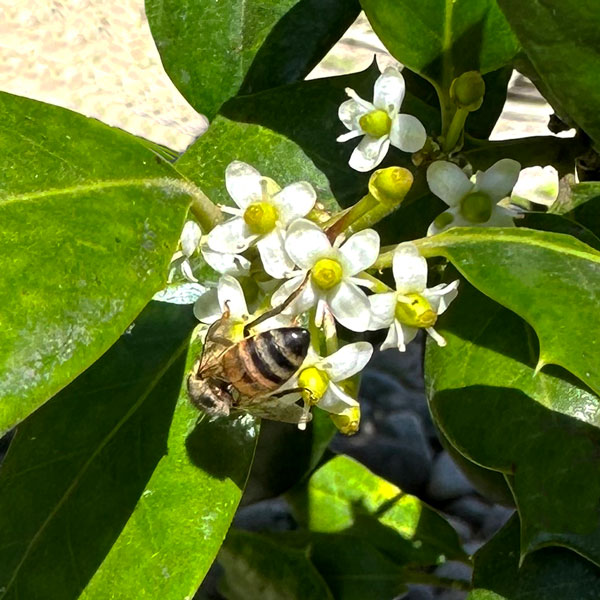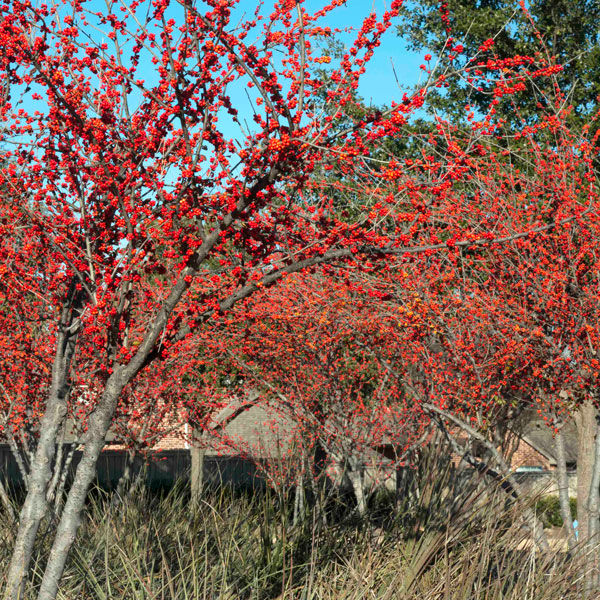Why do some hollies never have berries?

Does the word “dioecious” ring any bell for you? A botany bell.
It means that a particular species bears its male and female flowers on separate plants. One of my botany professors taught us that “di” meant “two,” as in “two houses.” Never trusting myself on things I learned back before nutsedge was invented, I still look it all up just to be sure. That’s how I found this great quick read from Iowa State University.
Most hollies are dioecious. So that’s why some yaupon or possumhaw hollies in nature have berries while others never will. The latter are male plants, and they function only to produce pollen. Bees carry the pollen to the female plants, and that’s where the berries are formed.

1. So, if you have a male yaupon or possumhaw, or American holly, you can wait until the next Ice Age, and you’re still never going to see any fruit on it. That’s reason Number 1 that your holly might not have berries. It’s a big one, and if your hollies are flowering right now, you can look closely to see if the blooms have anthers bearing pollen (male flowers) or primordial fruit that look like little green bowling pins (female flowers).
2. Most types of plants produce their flowers on vigorous new growth. If you have hollies that you consistently trim lower than their normal genetic height or width, they’ll eventually run out of steam. You’ll see little new growth, therefore, you’ll have fewer and fewer flowers and fruit.
3. If you’re in a drought or if your town has water curtailments and your plants are run on the dry side, again there will be a shortage of new growth. The same will happen if there’s a shortage of nitrogen fertilizer.

4. Perhaps your garden got caught by a late killing frost and the flowers or tiny fruit were hit by the cold. They’ll be blackened and shriveled within just a couple of days. That can cost you one year’s production of berries.
5. Finally, if you don’t have good activity of bees in your neighborhood, it’s even possible that the pollen didn’t get transported from the male plants to the ladies. That’s why you want to have one male possumhaw holly for every 5-10 female plants. However, for the sake of consistency, don’t include it in a row with the females. It will have very little to offer beauty-wise in the winter. The bees will find it no matter where you plant it. Put it somewhere else in the yard.
Important exception: A few hollies – some of our important ones – are monoecious, meaning they have both male and female flower parts on the same plants. In fact, they have them in the same flowers. We call those “perfect” flowers. Fruit can set with just one plant. Burford holly and many of its offspring fit into that category. The list includes Burford, dwarf Burford, Willowleaf (also known as Needlepoint), and Nellie R. Stevens. Several “Red” hollies are also self-fruiting, including Robin, Oakleaf, Oakland, and Liberty.
